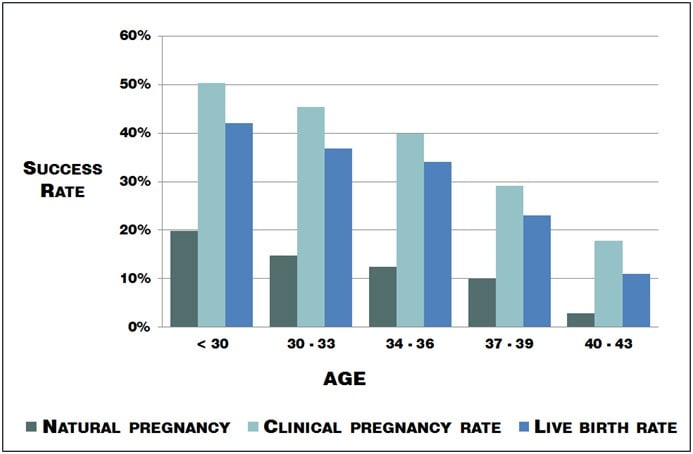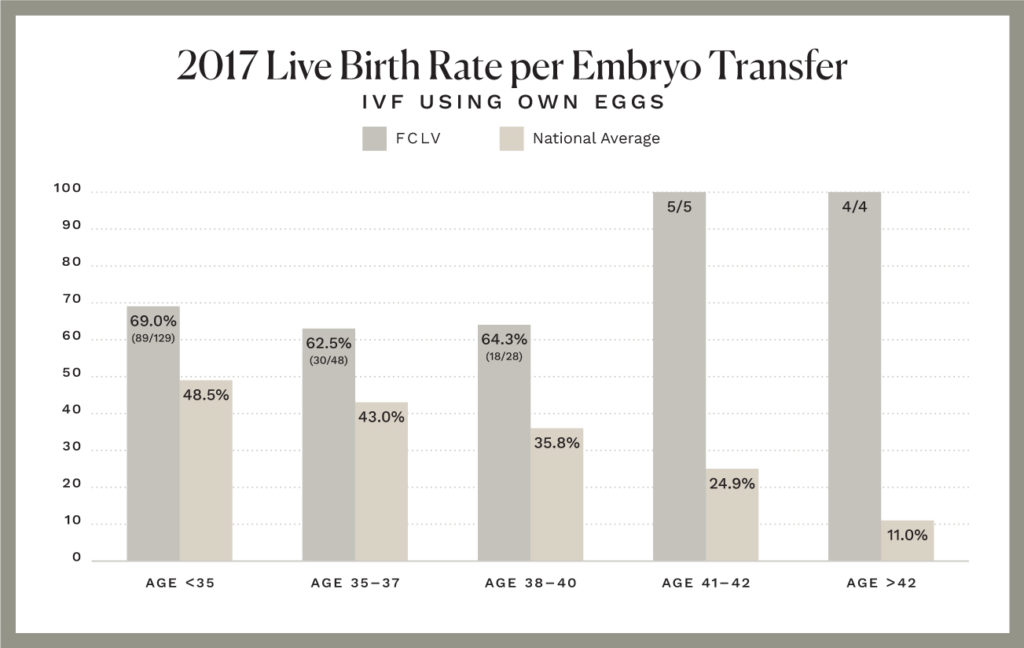
Beyond the age of 40, the success rate drops even more, and in those patients, we may need 5 or 6 embryo transfers if we want to achieve pregnancy. The success rate decreases dramatically to 20% per embryo transfer, and in those cases, we may need 3, 4 or even 5 embryo transfers to achieve success. It is normal for the AMH to be low at that age. This changes dramatically when the female age is near the age of 40. In such a case, we would probably need 2 or 3 embryo transfers to achieve a successful outcome. If we have a couple in the mid-30s, at 35-37-year-old females with more or less the same age or slightly older or younger male partner, then the success rate decreases, and in general, it is between 35-40% per embryo transfer. On the other hand, Dr Tsakos added that his impression is that doctors tend to investigate less and less. We used to perform more laparoscopies than we do now. Thirty years ago, scan machines were not as technologically advanced as they are today. In the last 10-20 years, the way of investigating patients have been changed in what is essential and what is not. Unfortunately, there’s no agreement between doctors all over the world sometimes, there’s not even an agreement between doctors within the same unit as to what consists of baseline investigation. Some people would go a bit further and would include some sort of elaborate tubal or uterine assessment with hysteroscopy as part of their investigation.

Therefore, Dr Tsakos emphasised the importance of adequately investigating the couples.ĭr Tsakos agreed that checking the karyotype or checking very standard endocrine profiles, including thyroid function and prolactin levels, is part of the essential investigations. The more failures a couple has, regardless of their age, the less chance of success they have regardless of whether they change units or not. However, things may be more complicated if this couple has been unsuccessful before.

A maximum of 2 or 3 embryo transfers would suffice for achieving a successful pregnancy in such a couple. With 1 stimulation cycle, we can more or less ensure 2 or 3 embryos for transfer if a couple is in their early thirties and if the female has a normal ovarian reserve. Statistically, within a couple of transfers, this couple could be successful. The female has a possible tubal factor, her partner has a small male factor or even with unexplained infertility, we’re talking about a 40-50% of success rate per embryo transfer. If we have a young couple in their early 30s who haven’t done IVF before. It’s very important to define the chances that this particular couple has. We always need to take the couple’s history, and their particular circumstances into account. The first thing we should do is try to define what is a successful outcome by investigating all the individual circumstances and setting out a possible number of treatment cycles necessary.

During this webinar, Dr Elias Tsakos, FRCOG, Medical Director at Embryoclinic – Assisted Reproduction Clinic in Thessaloniki, Greece, talked about factors that affect successful IVF cycles and how many cycles are usually needed to achieve pregnancy.ĭr Tsakos started his lecture by answering the main question of the topic: How many IVF cycles are needed for a successful pregnancy? According to Dr Tsakos, a very clear answer is: it depends on the individual case, how you set up before you start your possible successful outcome, etc.


 0 kommentar(er)
0 kommentar(er)
